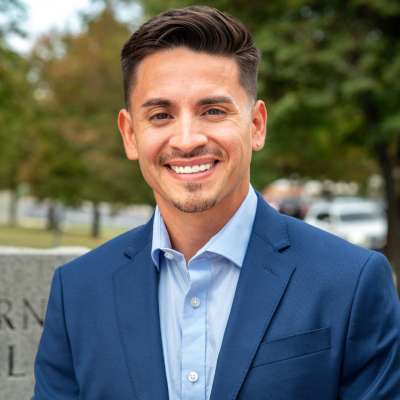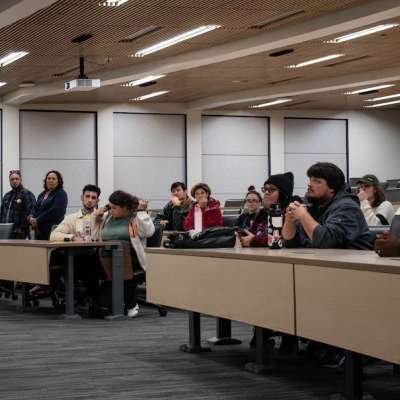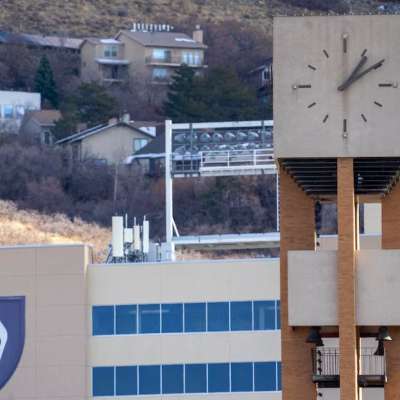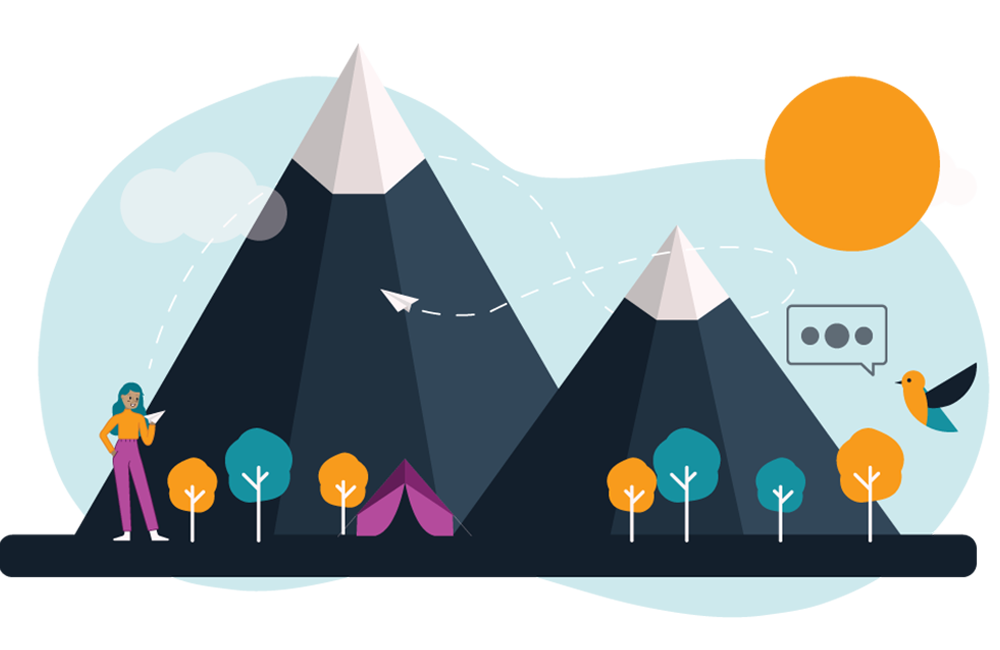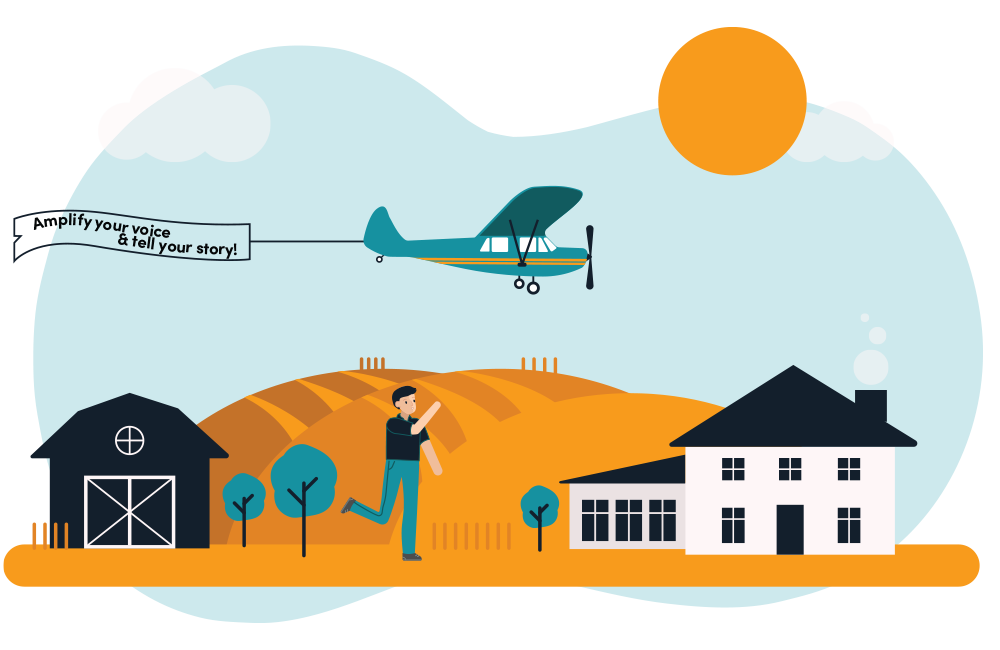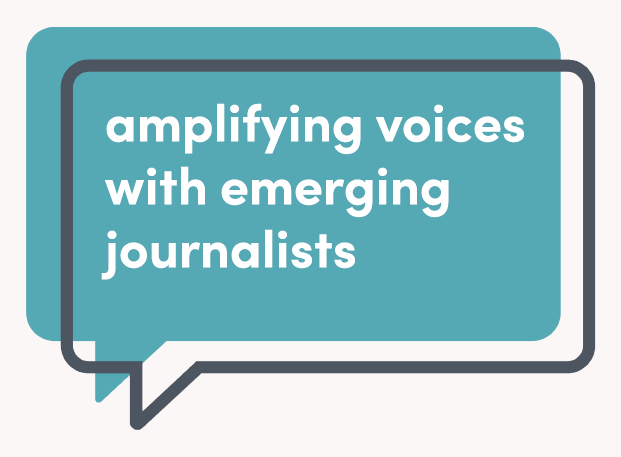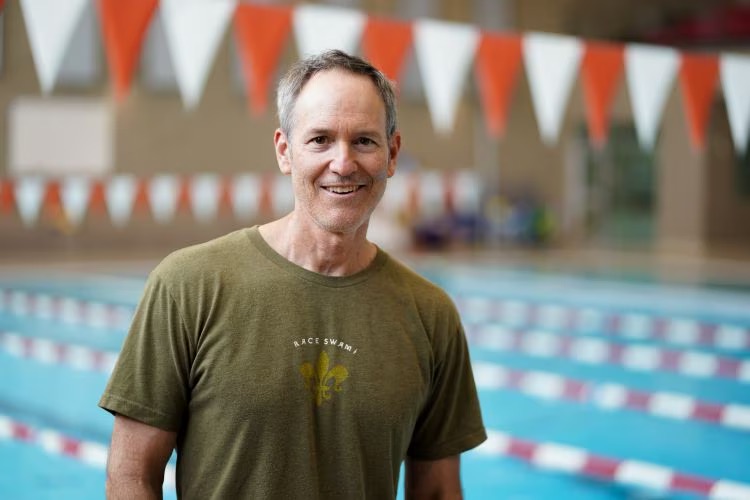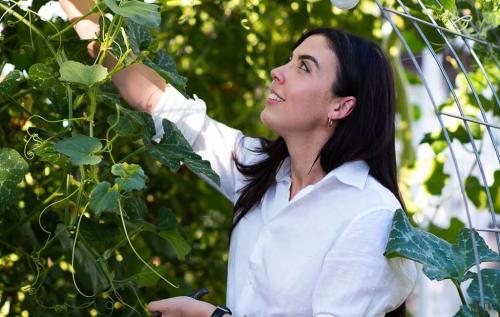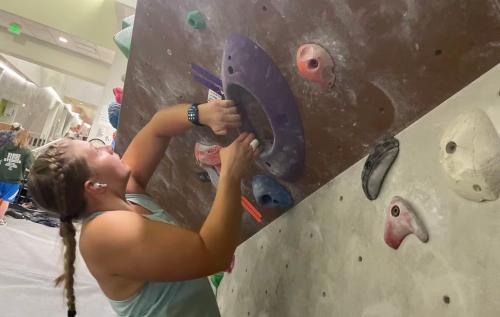Daryl Lindsey’s career in landscaping began as a hobby.
She often helped friends reorganize their lawns and gardens in individualized ways that also benefited the neighborhood’s ecosystem. Then, last summer, Lindsey began flirting with the idea of turning her hobby into a full-time job.
Lindsey’s career had been broadcast journalism and digital marketing until 2022. She first joined the media world outside of college as a digital producer for KUTV 2News. A few years later, Lindsey moved from journalism to marketing, achieving success in the eyes of everyone but herself.
As a marketing and public relations manager for a major Utah ski resort, Lindsey said she eventually reached the pinnacle of “succeeding at things [she] didn’t care about.”
Lindsey’s values did not coincide with the work, she said. Unable to focus, she found herself having more and more trouble meeting deadlines. In one of her TikTok posts, she describes beginning to falter in workplaces that are molded by and operate around capitalist goals.
Depression soon sunk in. After months of therapy, Lindsey was medically diagnosed with ADHD and late-onset adult autism — something, she said, that would change the trajectory of her life.
While the diagnosis was disarming to Lindsey, she said the realizations it brought led to her leaving marketing behind.
“I just hit a wall,” Lindsey said. “I needed to transition to something that was not only aligned with my values, but also my interests.”
Lindsey left her cubicle one day and set out to search for that something. What she found was more personal, and more green.
At home, Daryl had always had a green thumb, and found her penchant for gardening could be useful to others online. In 2022, Lindsey began using TikTok to educate an online audience about water-efficient and sustainable lawn practices. When some of her videos on the platform — yardfarmer.co — went viral, with one currently sitting at over 3.7 million views, she recognized a distinct and widespread need among many other homeowners.
“There’s a gap in the market for landscapers that are native-plant and water-wise focused,” Lindsey said, “especially as our climate anxiety continues to increase along with our awareness of … everything that’s happening with the Great Salt Lake.”
Lindsey’s presence on TikTok led online users to ask her to design their yards. Lindsey said she was more than happy to do so, and upon sharing this work online, her popularity on TikTok exploded further.
“It was a chicken-before-the-egg scenario,” said Lindsey, who began receiving many email inquiries before she had any kind of formal business.
Early this year, Lindsey launched the website for her organization, yardfarmer.co — through which she assists Utah homeowners by creating and planting ecologically sustainable designs for their lawns and gardens that don’t sacrifice beauty.
What is sustainable landscaping?
Sustainable landscape design, Lindsey said, may be more properly termed “regenerative landscaping.” It’s a practice that reduces water use by using drought-tolerant plants that regenerate every year, with little effort from the lawn’s caretaker.
Regenerative landscaping seeks to preserve the natural elements of one’s green space, she said, letting such areas exist as they would without human intervention.
“That’s my favorite part about these designs. I want to sit amongst my flowers, have a cup of coffee and enjoy my afternoon,” Lindsey said. “I don’t necessarily want to be doing manual labor every minute of every day.”
Allowing undergrowth, she continued, also makes for a healthier and more vibrant ecosystem, capable of supporting more native plants, bugs and other creatures. Lindsey said she is especially fond of the family of doves that nest in her fruit tree, above multiple canopies that comprise an ecosystem specifically designed to sustain itself, year after year.
The monarch butterfly, which was declared endangered last year, is one such species that depends on native plants to thrive.
Lindsey also pointed out that monarchs are natural pollinators of milkweed, a native plant in Utah’s western desert ecosystem. Milkweed assists monarch butterflies in their migration across the country, so more of the plant in backyards means more places for the monarchs to pollinate when they pass through Utah – a crucial region in their annual migratory patterns.
Milkweed is also a drought-tolerant plant, as are many plants native to Utah, according to Utah State University’s Center for Water-Efficient Landscaping.
Lindsey lamented that secondary water fees could add costs to homeowners, under recent legislation to start metering outside water. Her solution? Water less by integrating drought-tolerant plants into neighborhood lawns and gardens across the Salt Lake Valley.
“You’re going to save money, especially in the parts of Utah where you’re not hooked up to secondary water or [where] they started metering your secondary water,” she said. “You’re going to reduce your long-term water needs, which is good for the planet and good for your wallet.”
Grass is a consideration, too
Grass is another area where homeowners can save water.
While most lawns in Utah grow Kentucky bluegrass, Lindsey champions a number of more drought-tolerant strains of turf grass (grass you can walk on and don’t have to wade through). Buffalo grass, for example, is the only turf grass native to the United States, and it thrives in Utah’s landscape, she said.
What’s more, Lindsey’s explanation of seeding a new lawn does not require an overhaul of one’s existing grass. Instead, the homeowner may seed any one of these drought-tolerant strains over their current lawn and wait a few seasons for the new strain to take over.
“We need lawns,” Lindsey said, noting a lawn’s importance to a family or dogs. “But we can make our lawns smarter and more efficient, and drastically reduce the amount of water they require.”
Sarah Anderson is one Salt Lake City homeowner who said she has benefited from Lindsey’s work.
“We were really tired of looking at yellow grass,” said Anderson, who’d been scarcely sprinkling her lawn because of recent suggestions to use less water. “But the quote for professional landscapers to come out and make these transitions was something like 40 grand, and it’s not a very big yard. I thought, ‘We’d never do that.’”
Lindsey visited Anderson’s home in October 2022, and replaced the yellowing lawn with native, drought-tolerant plants, including trees and shrubbery. The entire process took two days, according to Anderson, far less time than the three-week estimate that traditional landscapers gave her.
This was due in part to one of Lindsey’s connections, a group of Utah arborists who dropped off a truckload of wood chips for free.
“[Lindsey] completely planned everything, including what [the lawn] will look like in 10 years,” Anderson said. “She asked me questions, valuing my input, even though in the end I really let her run with it.”
Anderson added that she’s happy to have incorporated sustainable landscaping into her lawn.
“This drought isn’t going anywhere, so I really think it’s time to make a shift,” she said. “It’s absolutely ridiculous to think that we’re literally just pouring water in the ground. … It really feels good, just as a person in the community, to be making this transition.”
Contacted this month, Anderson said the landscaping is “doing great. No grass at all. All the plants have flourished and we are so happy with the decision. It’s very low maintenance and easy to care for.”
Turning a hobby into a career
Lindsey said she has found the regenerative practice to be a personal yet effective step toward confronting the growing climate crisis and the shrinking Great Salt Lake.
It also has helped significantly with her work life. By aligning her job with her values, Lindsey said she alleviated the negative effects that her diagnoses of ADHD and autism were having on her performance at her old job. In the end, she reported relief and contentment with her new hobby-turned-career.
“The idea of monetizing your hobbies is complicated,” Lindsey said. “You don’t want to take the joy out of all of your hobbies and make your hobbies a job – but at the same time, where I was at with my diagnosis, I was basically learning that my brain wants to focus on what it wants to focus on.”
Allowing oneself to focus on what they’re good at is a tenet that came out of a movement in the field of psychotherapy in the 1990s, called “positive psychology,” which stresses the importance of “interest-driven stimulation” when evaluating a person’s job or place in society.
Lindsey said it may help her that her new job puts her outdoors, alleviating burdens on the earth and instituting lawns that will help with the state’s drought situation.
“I understand that planting some flowers isn’t going to save the world, but it is going to have enough tiny, positive impacts that I can channel all the stress and anxiety I feel for where things are going with the climate … into this work,” Lindsey said. “It’s knowing that you’re helping in even the smallest of ways.”
Kyle Forbush wrote this story as a journalism student at Salt Lake Community College. It is published as part of an ongoing collaborative including nonprofits Amplify Utah and The Salt Lake Tribune.
###
NOTE TO MEDIA PARTNERS PUBLISHING WORK
We also request organizations include the following text either at the beginning or end of the story text :This story is jointly published by nonprofits Amplify Utah and [Your Media Organization's Name] to elevate diverse perspectives in local media through emerging journalism. Kyle Forbush wrote this story as a journalism student at Salt Lake Community College. For more stories from Amplify Utah, visit amplifyutah.org/use-our-work.







